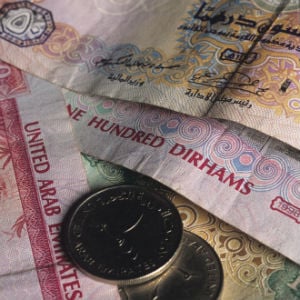
The largest banks in the Gulf Cooperation Council (GCC) region reported stronger loan growth in the second quarter of 2025 compared to a year ago, supported by lower regional interest rates and improved economic sentiment.
Al Rajhi Banking & Investment Corp., based in Saudi Arabia, recorded the sharpest loan growth among the top five GCC lenders, with year-on-year expansion rising to 19.31 per cent, up from 7.37 per cent a year earlier. Saudi National Bank followed with loan growth accelerating to 12.21 per cent from 10.25 per cent in the same period last year.
In the UAE, First Abu Dhabi Bank (FAB), the country’s largest lender, saw loan growth climb to 10.71 per cent, compared to 6.34 per cent a year earlier. FAB also raised its full-year loan growth forecast to the low double digits, up from a previous single-digit outlook. Emirates NBD Bank similarly revised its loan growth forecast to the low double digits after reporting a 14.28 per cent increase in Q2.
Qatar National Bank (QNB) posted loan growth of 9.38 per cent in Q2 and raised its guidance to 7 per cent–9 per cent, up from 5 per cent–7 per cent previously. “Almost half of the growth came from Turkey,” said Durraiz Khan, senior vice president for group financial consolidation, during a July 14 earnings call.

According to a July 10 outlook report by S&P Global Ratings, loan growth in Qatar, Saudi Arabia, and the UAE is expected to remain strong through the second half of 2025, in line with anticipated rate cuts from the US Federal Reserve, which the GCC nations are likely to mirror.
The increase in lending activity also lifted net interest income (NII) across most major banks.
Read: Arab Bank posts solid H1 2025 results with $535.3m in net income
QNB’s NII rose to $2.34bn from $2.12bn a year earlier, despite margin pressures from its Turkish operations. “Deposits in Turkey reprice faster than loans,” said Khan, adding that QNB expects its net interest margin (NIM) to improve if Turkey lowers rates later this year.
Emirates NBD, which operates in Turkey through its subsidiary DenizBank AS, reported a 22-basis-point decline in its Q2 NIM to 3.36 per cent. However, the bank expects its full-year margin to range between 3.3 per cent and 3.5 per cent, supported by a potential recovery in DenizBank’s profitability. NII for the quarter reached approximately $2.28bn, marking a 6 per cent year-on-year increase.
According to Fitch Ratings, GCC banks with Turkish exposure may benefit from reduced net monetary losses if inflation in Turkey continues to ease.
Al Rajhi Bank led the peer group in NII performance, reporting a 25 per cent year-on-year increase to $1.95bn. Higher net financing, investment income, and banking services fees helped lift its Q2 net profit to $1.64bn, a 31 per cent increase compared to the same period last year.
The entire report can be found here: Lower interest rates support strong loan growth at Gulf’s largest banks in Q2 | S&P Global Market Intelligence

